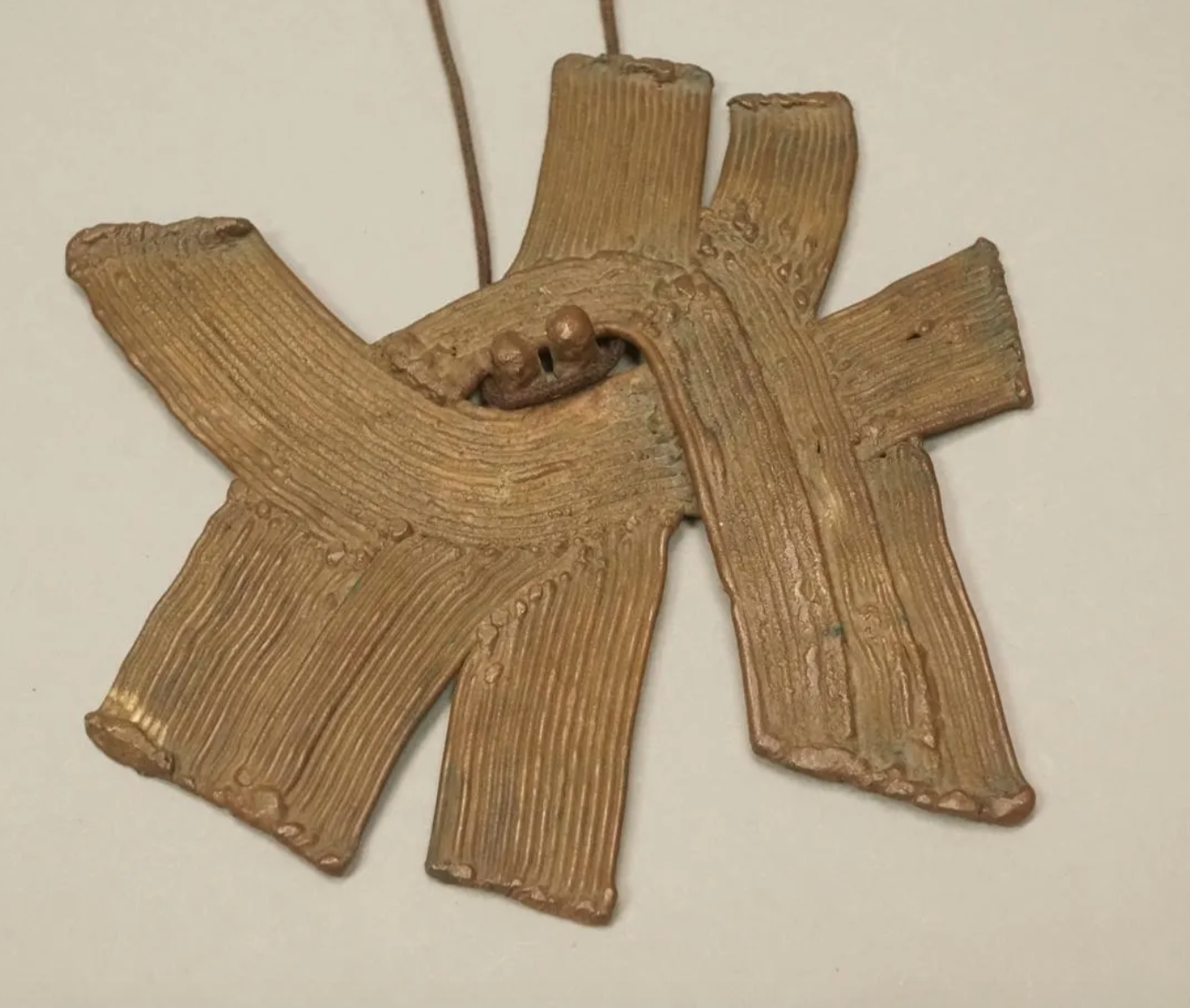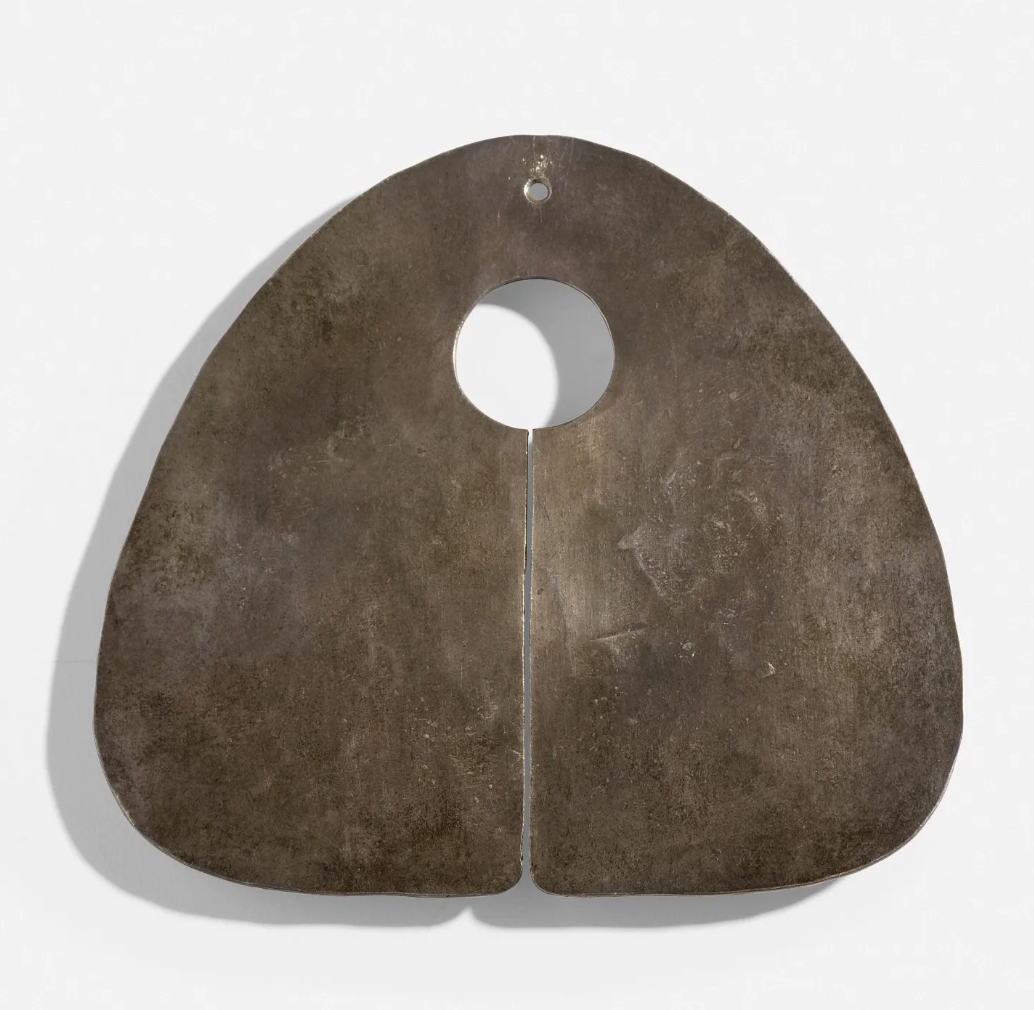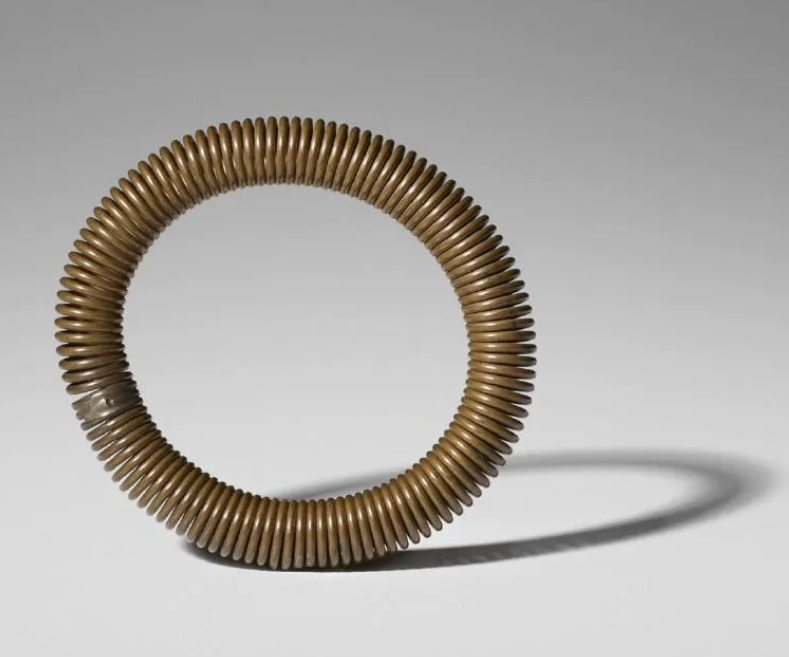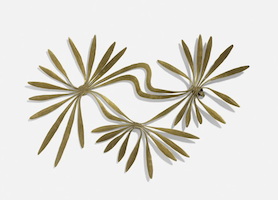
NEW YORK — Harry Bertoia is best known for his furniture and his wildly inventive sculptures, but jewelry aficionados are wild about Harry’s bold designs that transformed ornaments into wearable art.
Bertoia (Italian and American, 1915-1978) first explored the medium of jewelry when he was a high school student in Detroit, but pursued it in earnest after he entered the Cranbook Academy of Art in Michigan. In 1937, a year after graduating high school, Bertoia showed his portfolio to Eliel Saarinen, then-director of the Cranbrook, who immediately awarded him a scholarship. Bertoia designed hundreds of pieces of jewelry in his lifetime, but the bulk of them date to 1937 to 1943, when he was at the art school.
Bertoia focused on jewelry while at Cranbrook as it did not require much metal — an advantage, given the voracious resource demands of World War II. He worked with jewelry all his life.

In 2015, the Cranbrook mounted Bent, Cast & Forged: The Jewelry of Harry Bertoia, an exhibit that traveled to several museums. It was the first museum show to focus on this aspect of the designer’s oeuvre. Several of the jewelry pieces pictured in this article appeared in the exhibition.
An early leader of the American Studio Jewelry movement, Bertoia adeptly married form, dimension and materials in his designs. Growing up in San Lorenzo, Italy, he was inspired by the metalwork of the local Roma people, who earned money by making and repairing kitchen items. The hand-hammered and shiny metal surfaces on many of Bertoia’s works, from sculptures to jewelry, reflect his roots and show how he brought the medium to new heights. “The organic shapes and fine detail of the jewelry later evolved into the early sculpture forms,” according to the Harry Bertoia Foundation website. He made brooches, bracelets, necklaces, pendants and rings out of whatever metal was handy, rendering them in biomorphic forms. Gold and silver were favorite materials, but he often worked with bronze and copper, too.
A circa-1942 brooch with riveted brass, which Bertoia made while at Cranbrook, attained $32,000 plus the buyer’s premium in November 2016 at Wright. The hand-forged piece assumes organic shapes that resemble flowers.
By the mid-1940s, Bertoia was moving toward graphic forms that were more abstracted, such as in a circa-1940 figural brooch in silver, another piece made during his six-year tenure at Cranbrook. It sold for $8,500 plus the buyer’s premium at Wright in June 2022.

Bertoia became well-known for his jewelry while at Cranbrook, and his pieces were exhibited alongside those of Alexander Calder at the Museum of Modern Art in New York City. By 1950, however, his interest in chair design commanded his attention, and his works in jewelry became much more infrequent. He created a few as special gifts for his wife, Brigitta, as well as the odd piece here and there, such as a circa-1960s-early 1970s large bronze pendant necklace that sold for $13,000 plus the buyer’s premium in November 2017 at Uniques and Antiques, Inc. The welded beryllium bronze pendant sports an interesting painted brush stroke design.

Things changed around 1975, when Bertoia began a new line of dramatic jewelry. It featured pieces such as a circa-1975 Gong pendant in hand-hammered silver, which brought $17,000 plus the buyer’s premium in April 2022 at Rago Arts and Auction Center. A limited-edition line was slated for production, but Bertoia died in 1978 before it came to fruition.
Another piece from his mature period is a bronze spiral-coiled bracelet that realized $5,000 plus the buyer’s premium in May 2017 at Wright. The circa-1975 bracelet is wrought from bronze coils and boasts a style he repeated in several other copper bracelets.

Bertoia remains best known as a sculptor, but before he created his monumental works, he distinguished himself with designs made on a much smaller scale. Today, Bertoia jewelry that once charmed high-society ladies in Bloomfield Hills, Michigan is coveted by collectors and by those who love the idea of sculpture you can wear.


